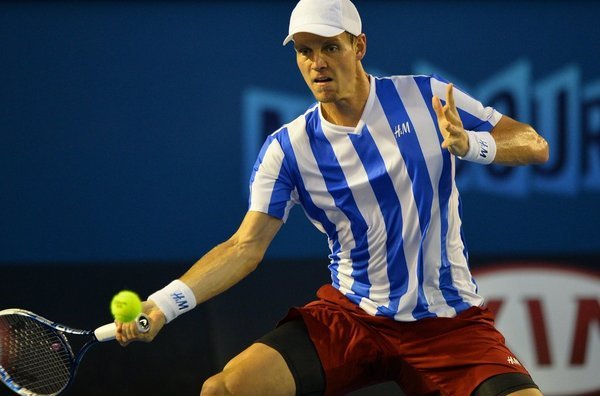Tennis offers a way for not only players to showcase their skills, but also clothing companies to put their brand on display. The better the player the more the exposure for that particular brand. This is no new concept, but in this day and age when everything from historic stadiums to sports jerseys are defined by sponsors, every company wants a piece of the pie. No longer are the big brands such as Nike or adidas the only players in this sphere. Smaller sport brands are also trying to hit a winner on the pro tour and sometimes they do a better job than the billion dollar brands, not only in how their outfits look, but also in their selection of players.
At the forefront of this movement is UNIQLO. UNIQLO is a massive brand in Japan but was relatively unknown in the United States before their push into tennis. The American equivalent would be a clothing company like GAP, a popular lifestyle clothing company not known for sportswear. Envision Rafa Nadal sporting the GAP logo across his chest. It would look ridiculous. This is exactly what happened however, once Novak Djokovic cut short his sponsorship with Sergio Tacchini, a brand that has a significant history within the game. Djokovic decided to team up with UNIQLO in a undisclosed, but undoubtedly lucrative deal that instantly catapulted the brand into a whole new spotlight.
This deal was interesting for a few reasons. While players like Nadal, Sharapova, and Federer have signed onto massive deals with the traditional sports brands Djokovic has opted for a virtual unknown. Money almost certainly played a massive part but Djokovic seems to be the sort of player that does things his own way, which is admirable but can be risky. It is more of head-turner that UNIQLO would be willing to splash the cash on arguably the top player in the world. On the surface it appears to be a no brainer to sponsor one of top players in the world, but it comes with risks as well. It isn’t the same as sponsoring an entire team. Players and coaches come and go but that team and it’s fans are constant, ensuring your brand gets exposure. What if Djokovic has a drop in form, or worse yet gets injured for the entire season? Your major investment just got a lot less valuable.
As stated earlier, it was only natural for other contenders to throw their hat in the ring but these are the consequences that must be weighed when making such a decision. The reason these companies believe the risk is worth it is because the point of entry into the market is relatively straight forward. If you can convince, or throw enough money, at a top player than you have instantly entered the tennis industry. UNIQLO may have started this trend but plenty of others are jumping on board. H&M, the Swedish retail-clothing company teamed with Tomas Berdych in 2013 to design eye-catching tennis outfits (pictured above) for the first time. He has stated that he enjoys having a hands on role in designing these outfits, which is surely an opportunity many other players, especially on the female side, would relish.
Berdych and Djokovic are two established top players that boosted these two retail-based brands vaulting them instantly into the tennis brand conversation. There are other brands as well that are making different, but equally as calculated decisions when it comes to tennis sponsorships. Under Armour and New Balance have struck up partnerships with Sloan Stephens and Milos Raonic respectively. These are two up and coming players who have the potential to be top 5 players, a fact that surely these two companies surely took into consideration. It gives them the chance to showcase their brand at the highest level with optimum exposure.
It is a bit alarming that these retail-based companies are getting into a sport such as tennis that is steeped in tradition. The same was probably said however, when traditional brands such as Lacoste, Polo, and K-Swiss started to be replaced by brands such as Nike and adidas. Tennis prides itself on the tradition it has developed and can be stubborn when new trends catch on. Only as recent as 2002 Tommy Haas was asked to put sleeves on his shirt at the US Open because it was deemed unfit according to the “Official Grand Slam Rule Book”, which in this day and age seems ridiculous. A fresh, albeit unorthodox, perspective may be what the industry needs to continue to push tennis into the consciousness of a mainstream market.
